
Veronicastrum virginicum, Culver's root: planting, growing
Summary
Veronicastrum virginicum in a nutshell
- Veronicastrum virginicum is a large perennial with a slender habit, producing summer flowering in lavender, lilac (V.virginicum ‘Fascination‘), pink or white spikes
- Its vigorous foliage remains elegant and very healthy until autumn
- Very hardy, it’s a very vigorous plant that lives for a long time!
- Easy to grow, it only requires one thing: moisture
- Very striking, it structures wet areas of naturalistic gardens
A word from our expert
Fans of giant plants will appreciate the Veronicastrum virginicum, this majestic and elegant perennial little-known yet remarkable both for its stature and for the poetry of its airy flowering.
Depending on variety, it displays all summer in lavender tones in Veronicastrum virginicum ‘Lavendelturm’, lilac in ‘Fascination‘, bright pink in Veronicastrum virginicum ‘Pink Glow’, sometimes white in ‘Album’ or purple to mauve in ‘Red Arrows’ and ‘Erika’.
From June to October, aerial inflorescences in long spikes reach for some Veronicastrum virginicum over 1.80 m tall and also make very pretty fresh, country-style bouquets.
Not widespread, this large perennial is nevertheless undemanding, it will tolerate any good garden soil provided it is fresh. Veronicastrum virginicum, which loves damp places, thrives at water’s edge, and fits happily into cool areas, in beds or borders in natural gardens to bring airiness and verticality.
Architectural and airy, it is perfect for filling large spaces in moist medium. Discover Veronicastrum virginicum; it requires virtually no maintenance, only watering if heat becomes too intense!
Description and botany
Botanical data sheet
- Latin name Veronicastrum
- Family Scrophulariaceae
- Common names Veronicastrum, Virginia speedwell
- Flowering July to October
- Height 1 to 2 m
- Sun exposure Sun, partial shade
- Soil type Neutral, moist
- Hardiness -15°C
Native to cool meadows, moist banks and ditches and floodplain grasslands of eastern United States — notably Virginia and Florida, via Arkansas — Veronicastrum virginicum or Virginia speedwell is a large deciduous herbaceous plant of the family Scrophulariaceae, close relative of veronicas.
This small genus includes only two species favouring wet habitats, among them Veronicastrum sibiricum and Veronicastrum virginicum, the best-known species, although still rather little known. Its lavender flowering is available in several cultivars in pink, white, lavender-blue or lilac, the best-known being probably Veronicastrum virginicum ‘Fascination’.
Veronicastrum virginicum quickly forms a made up of numerous stems reaching 1 m to 1.8 m in height with a spread of around 70 cm, depending on variety. It needs about two to three years to fill out properly but eventually produces very upright, slender clumps that occupy little ground. Longer-lived than veronica, it will live for decades, sometimes longer.
Deciduous foliage consists of linear leaves arranged in whorls of 3 to 6 regularly along stems. Leaflets are lanceolate, rough and dentate, a handsome dark green, sometimes tinged purple.
On this elegant foliage, Veronicastrum virginicum reveals a long, very graceful summer flowering. From June to September–October depending on climate, flower spikes forming a candle-like shape about 20–25 cm long appear at tips of the ramified stems. They consist of a myriad of tiny tubular flowers with very prominent stamens that give a downy appearance. A particularly luminous, dancing display that earned the plant its name: Veronicastrum, meaning in Latin “true star”.
These very pale lavender inflorescences on Veronicastrum virginicum ‘Lavendelturm’, bright pink (Veronicastrum virginicum ‘Pink Glow’), soft pink in ‘Roseum’, lilac in ‘Fascination’, sometimes white ‘Album’ or pink-tinged white, make beautiful cut flowers and last around ten days in a vase.
Some, such as ‘Erika’, offer a changing gradient of shades from pale pink to fading purple as season progresses.
Highly nectariferous, they attract butterflies, bees and other pollinating insects continuously from summer into autumn.
Flowers are followed by small ovoid dehiscent fruits. These dried candle-like spikes hanging on stems prolong decorative effect during cold season, sparkling under frost.
Perfectly hardy down to -20°C, Veronicastrum virginicum grows across much of France, except perhaps in Mediterranean climate, too dry and hot in summer: its only requirement is permanently moist soil. It prefers dappled sun or partial shade and tolerates any good garden soil that is deep, fertile and cool.
With its light, stately silhouette, Veronicastrum virginicum brings a country, structural touch to natural-style gardens.
It is particularly at home in wetter spots and will be superb by pond edges, at back of a cool border, lining shaded paths, or in a cutting garden.
You may also read
12 giant and imposing perennial plantsMain species and varieties
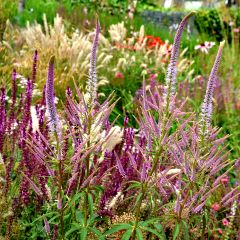
Veronicastrum virginicum Fascination
- Flowering time july to october
- Height at maturity 1,40 m
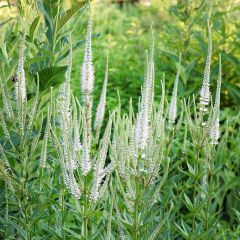
Veronicastrum virginicum Album
- Flowering time august to october
- Height at maturity 1,20 m
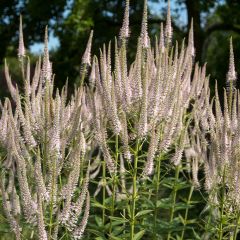
Veronicastrum virginicum Pink Glow
- Flowering time august to october
- Height at maturity 1,40 m
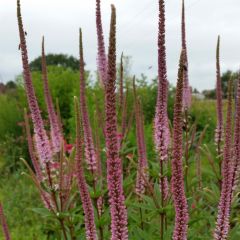
Veronicastrum virginicum Erica
- Flowering time july to september
- Height at maturity 1,40 m

Veronicastrum virginicum Lavendelturm
- Flowering time july to october
- Height at maturity 1,40 m
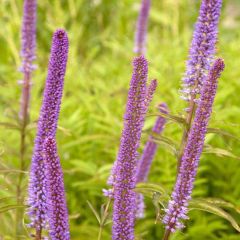
Veronicastrum Red Arrows
- Flowering time july to september
- Height at maturity 1 m
Discover other Veronicastrum
View All →Available in 1 sizes
Available in 2 sizes
Available in 2 sizes
Available in 1 sizes
Available in 0 sizes
Available in 0 sizes
Available in 2 sizes
Available in 1 sizes
Available in 3 sizes
Available in 1 sizes
Planting
Where to plant Veronicastrum virginicum?
Native to floodplains of eastern United States, Veronicastrum virginicum acclimatises easily in our gardens, tolerant of cold down to at least -15°C.
In terms of exposure, it prefers non-scorching sun and partial shade, especially in southern areas. Its only requirement is permanently moist, humus-bearing, deep and fertile soil, even clayey. It will withstand summer heat provided soil remains constantly moist and cool.
Taller than wide, although Veronicastrum virginicum occupies little ground space, give it a spot sheltered from strong winds so it can express its vertical habit and remain well-aerated, as it dislikes root competition. Avoid disturbing it once well established, as it will not readily tolerate being moved.
In the garden, it will fully come into its own as an understorey plant, planted in shade of deciduous trees, at the edges of water features or on a damp bank which it will brighten with its luminous flowering.
With its light, structural silhouette it is also perfect for bringing breath, movement and verticality to large rock gardens, the back of perennial borders which it lightens, or mixed borders, provided the soil never dries out in summer. In a cutting garden, it will create abundant walks or shrubs full of flowers for cutting.
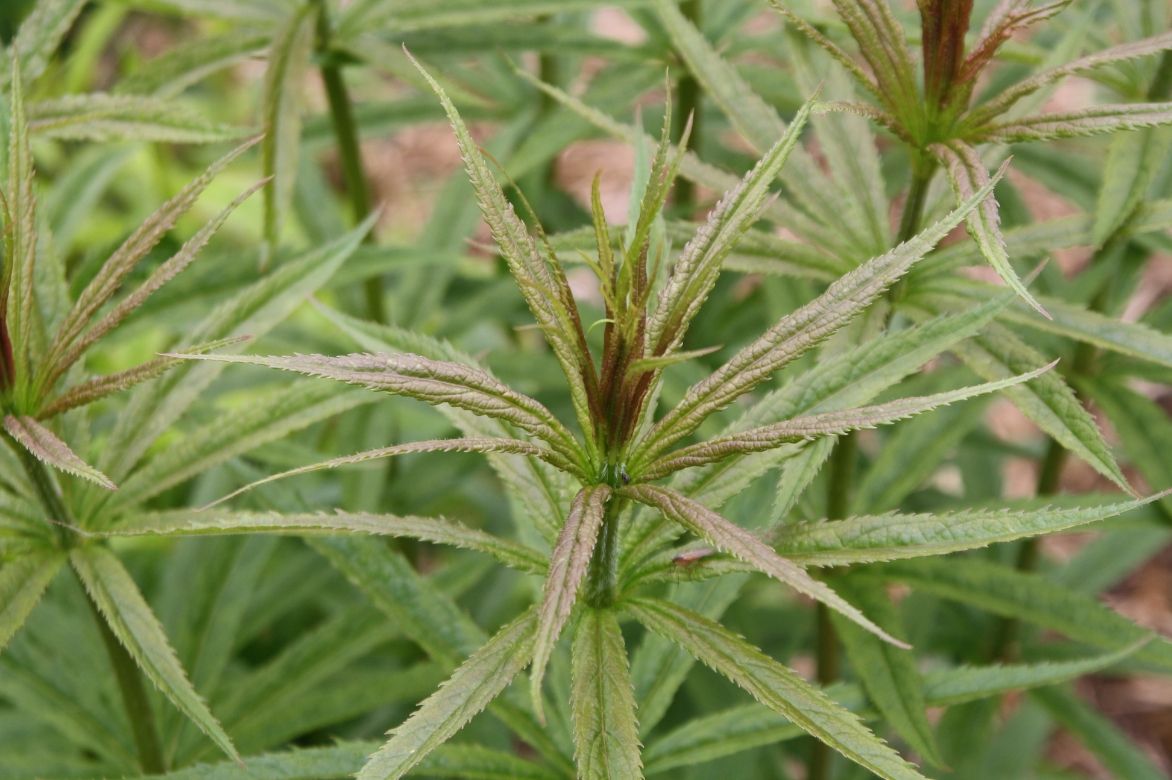
Graphic foliage of Veronicastrum virginicum
When to plant ?
Plant Veronicastrum virginicum from February to April after frosts or from September to November after hot spells.
How to plant ?
In open ground
Plant in staggered rows: minimum 5 plants per m², spaced 40 to 60 cm apart. For a striking effect, we recommend planting in small groups.
- Soak the rootball in a bucket before planting
- Clear the soil of roots and stones
- Dig the soil deeply
- Dig a hole 2 to 3 times larger than the rootball
- Add some compost to your garden soil
- Place the rootball and backfill without burying the collar
- Firm down then water generously
- Mulch to keep the soil cool
You may also read
12 perennials for heavy, wet soilMaintenance, pruning and care
Hardy and more vigorous than a Veronica, Veronicastrum virginicum needs little care once well established in cool, moist soil. A cool, moist soil ensures good development.
Water regularly during the weeks following planting, then in summer and especially during prolonged hot spells. Ensure soil never dries out completely. Mulch in June with a layer of turf to keep the soil cool at the base and renew this mulch during summer if necessary.
Fertilise annually in early spring or autumn with compost.
Cut back clump in autumn or leave dried spikes in place throughout winter, in which case perform this operation in March.

Faded spikes of Veronicastrum remain decorative in autumn and winter
Not very susceptible to disease, it may, however, only be affected by powdery mildew, recognisable by the white, felt-like coating this fungus leaves on foliage. Spray preventatively with Bordeaux mixture, as well as with nettle and horsetail manure, and follow our advice to tackle powdery mildew.
Multiplication
Veronicastrum virginicum multiplies very easily by dividing clumps. Carry out in March or October and only when plant is well rooted, at least 4 to 5 years after planting.
- Using a garden fork, lift part of the clump
- With a spade or by hand, separate a good division that includes leaves and roots
- Replant these divisions immediately in the garden
Companion plants for Virginia veronica
With its tall, graceful, vibrant silhouette, Veronicastrum virginicum brings rhythm and a structuring touch to naturalistic gardens and charms informal, rustic or meadow-style borders. It is perfect for brightening cool areas of the garden, creating ethereal flower masses. Planted in small groups, it provides striking verticality in harmonious mixes of cool colours, pinks, lilacs or whites, or in more complementary yellow/lavender combinations.
It particularly favours the wettest spots and will perform wonderfully by a water feature but also in large perennial beds, where it lightens flowering displays.
On pond margins, combine it with other waterside perennials, with airy pink or white plumes of Astilbes, Vernonias, Goat’s-beard, Liatris spicata, Meadowsweet, Siberian irises or bright yellow Lysimachias, Ligularias, and acid-yellow marsh euphorbias for a more contrasting effect.
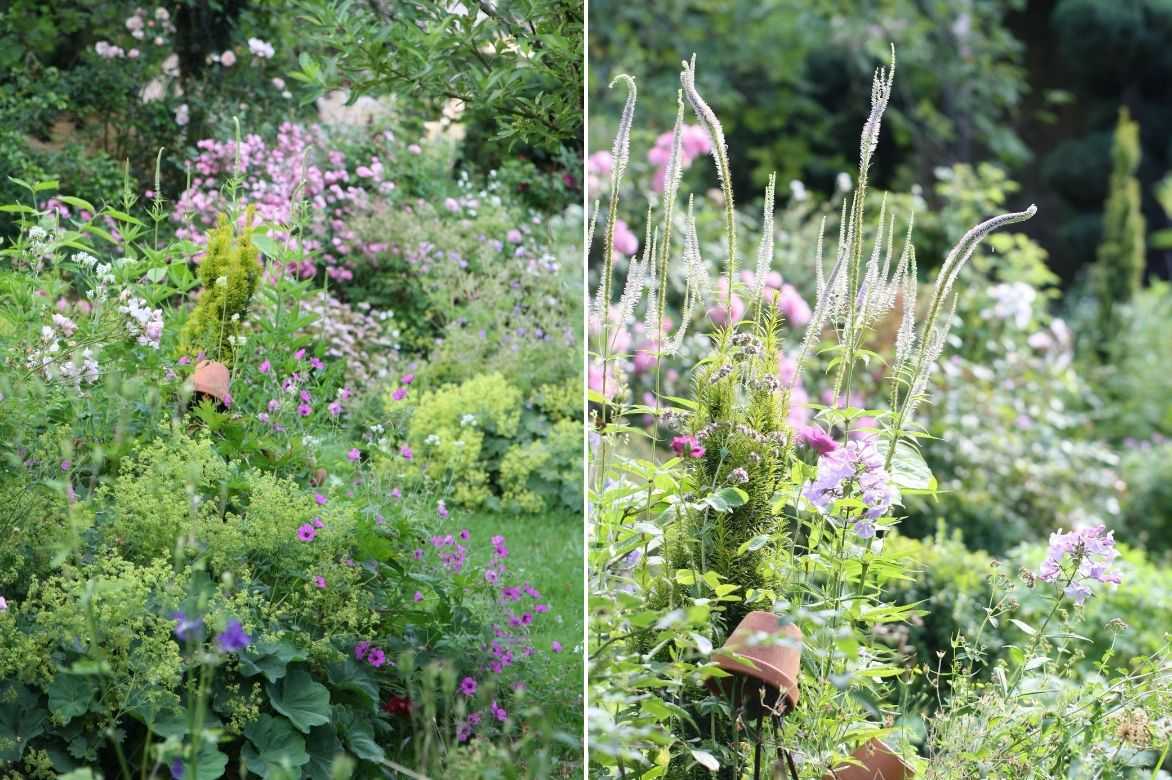
One example of a natural pairing: Veronicastrum virginicum var. album, Geranium ‘Patricia’, Alchemilla mollis, rose, Centranthus ruber ‘Albus’
In a naturalistic meadow-style planting, accompany your Veronicastrum virginicum with other wild-looking perennials such as Asters, riverbank thistles, paludal hardy geraniums, Leucanthemums, and willowherbs.
In a large bed, in scenes of finesse and lightness, it will combine well with spikes of grasses such as Calamagrostis Brachytricha or Feather Reed Grass and with Molinia or tufted hairgrass and with giant, airy perennials such as kisses-of-the-sun (Phlox paniculata) and Verbena bonariensis.
In a slightly wild mixed-border, it will form elegant clumps among summer-flowering perennials such as Verbena hastata, Virginia ephemerals, Eupatoriums, Mimulus, Knautias, Persicarias, and the bristly heads of Echinacea. Veronicastrum virginicum also slips easily between Digitalis and Phlox in varied colours.
Its moving spikes create a pleasing contrast when paired with plants with large leaves and a more upright habit such as Hostas or ferns like Osmunda.
In a pink garden or a romantic bed, it will harmonise with Japanese anemones, Achilleas, which flower until autumn, and will be an attractive partner for roses.
It will stand out against purple foliage of Acers, Nandina or a Physocarpus.
Useful resources
- Discover our collection of Veronicastrum: it brings together the best varieties
- Our ideas, our tips for a naturalistic garden!
- Dare to embrace height with our giant, airy perennials!
- Subscribe!
- Contents
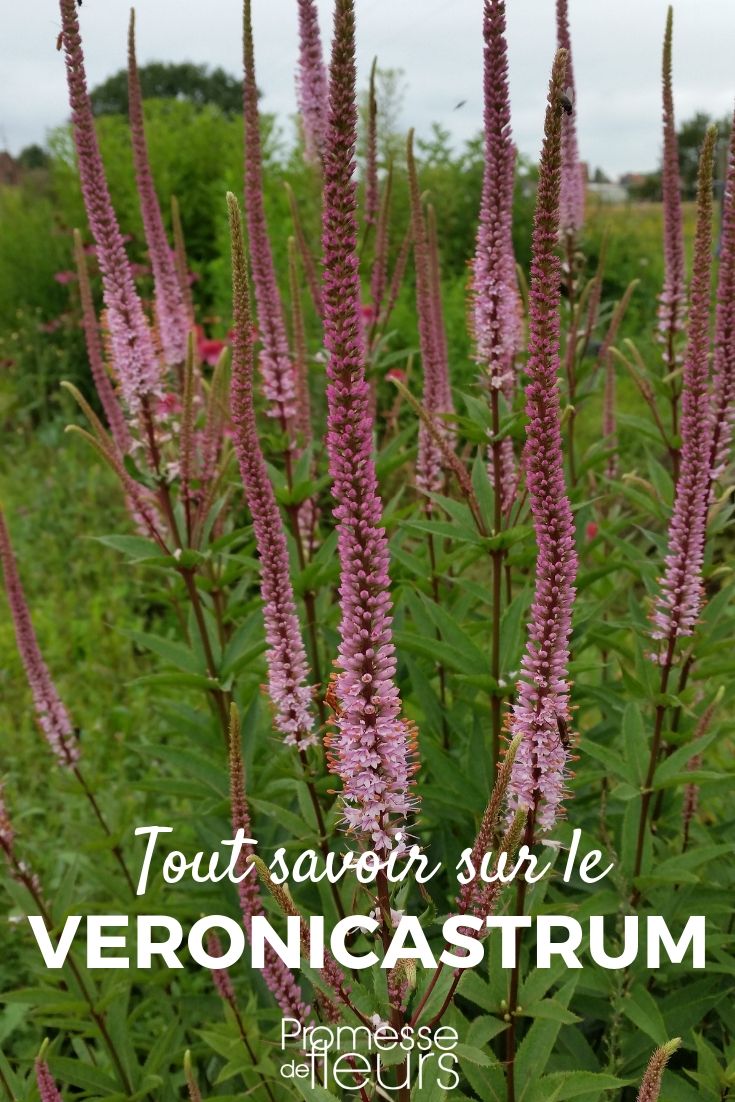































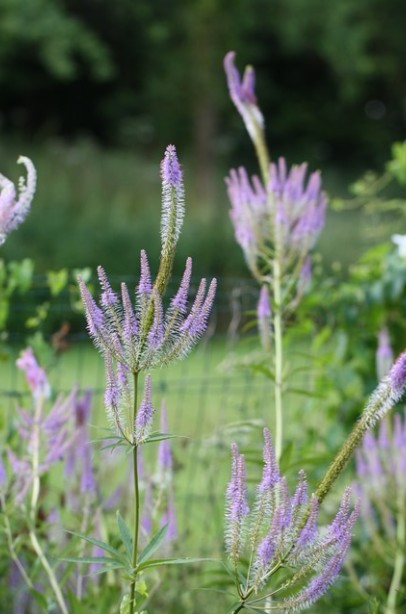



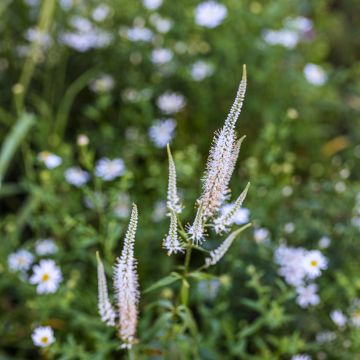
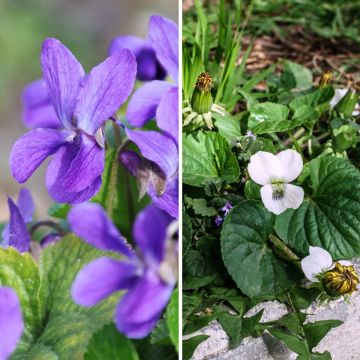

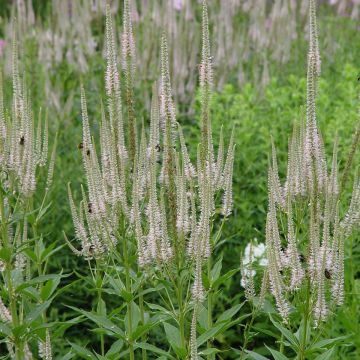
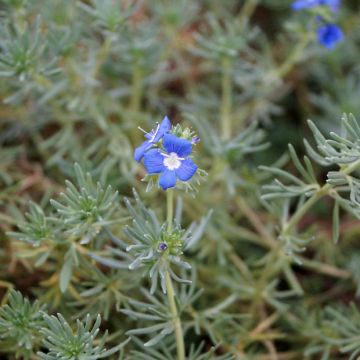

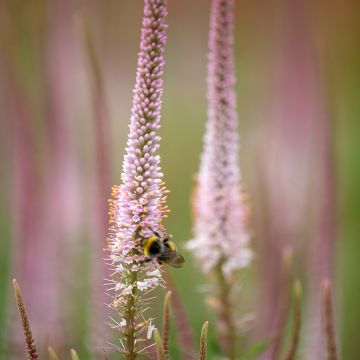
Feedbacks